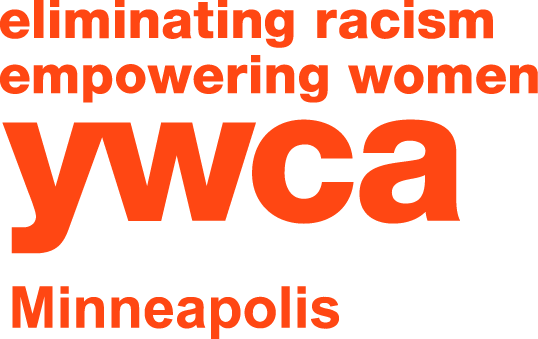Anti-Bias Curriculum for the Preschool Classroom
Children start forming biases as early as age three. Studies show that children who grow up in inclusive, culturally diverse programs are more likely to show empathy, cooperation and acceptance of diverse peers. A 2020 study by the American Psychological Association found that early exposure to different races and cultures helps children feel less anxious about differences and reduces the chances of prejudice later in life.
YWCA Minneapolis is a leader in providing anti-bias, play-based early childhood education. To help standardize anti-bias practices in childcare facilities nationwide, we published our methods in Anti-Bias Curriculum for the Preschool Classroom, copyright YWCA Minneapolis, by Redleaf Press in February 2021.
In this book, teachers and caregivers can learn how our curriculum uses an anti-bias lens that focuses on and builds children’s awareness, from self to friend to neighborhood and community and uses practical and real-life experiences to support teacher learning and practice.
We hope this curriculum will allow you to be curious, take risks and cultivate compassion in the classroom. Ideally, you will join us as anti-bias advocates. Then you can encourage your colleagues; who can inspire their peers, and so on. We think this is an attainable and essential goal for our communities, our children and ourselves.
A program without a commitment to anti-bias work can be harmful to children and its stakeholders. We are all in this together, and we hope to continue building communities committed to equity through anti-bias work.
A Flexible, Living Framework
Our objectives:
We follow each child’s lead and explore the learning domains through play.
Our play uses materials from the child’s world and home life.
Teachers weave anti-bias practices into all aspects of learning.
Based on these observations, teachers document what happens in play and shape their lesson plans.
Teachers change their practice by continually observing and assessing children’s growth and development.
Play is the best way to connect a child to learning goals. Each chapter of this anti-bias curriculum explores and explains our guiding principles.
Chapter 2: Anti-Bias Teaching
Guiding Question: What is bias?
This includes defining discrimination, prejudice and microaggressions. Here, we discuss modes of unfair bias, such as racism, homophobia, sexism, classism and religious and political bias, as opportunities to construct equity and fairness. We share our perspective on children's specific needs (physical, emotional, and cognitive development) and ways teachers can support differences in their settings.
Chapter 3: Self-Reflective Practice
Guiding Question: How can I know myself better to improve my anti-bias teaching skills?
Here we focus on self-reflection. We believe our willingness to learn about ourselves helps us recognize the perspectives of others. We share our investigation of this process, and what we have found are some of the ways self-knowledge can invigorate and elevate our practice.
Chapter 4: Families: The World of Children
Guiding Question: How can I connect with families to help children learn?
This chapter is all about families. Since each child views the world from the vantage point of home culture, we believe that the best curriculum is the one that connects with not just the whole child but also the whole family — and often the whole community as well.
Chapter 5: Domains and Standards
Guiding Question: How can I use the domains and standards to guide anti-bias teaching?
Here we connect anti-bias work with high-quality learning standards. We describe how anti-bias teachers can set goals in social-emotional, language, and cognitive learning domains. Our framework is aligned with Minnesota’s Early Childhood Indicators of Progress.
Chapter 6: Anti-Bias Observation and Assessment
Guiding Question: How do I use observation and assessment to support children?
In chapter six, we offer tools for teachers to measure and support children’s success through observation and assessment. We share how our process encourages active play-based, teacher-child interactions as the best place to collect observation and assessment data.
Chapter 7: The Anti-Bias Classroom: Lesson Planning, Teaching and the Learning Environment
Guiding Question: How can anti-bias play-based strategies support optimal anti-bias learning?
Here, we provide an overview of lesson planning. This guide will help teachers integrate our key pillars of quality — anti-bias and play as the vehicle toward learning goals — into the daily classroom environment.
Strategies and Stories of What Implementation Looks Like
This book provides strategies and stories to show you what implementation looks like in our programs.
We also offer questions to help you analyze your classroom interactions, relationships and outcomes. Our goal is to promote teaching that is grounded in anti-bias principles, and the results are promising. Through parent surveys, we’ve learned that 81% of our children demonstrated grounding in their own culture and valued diversity in others.



